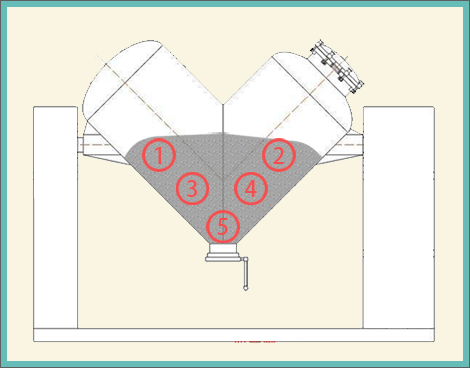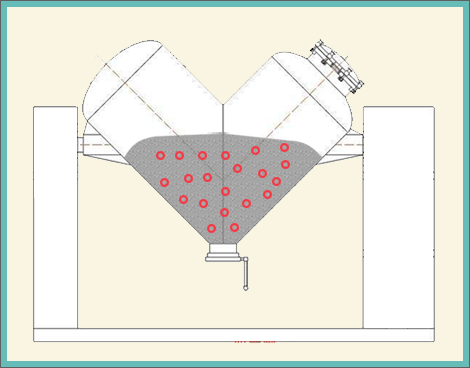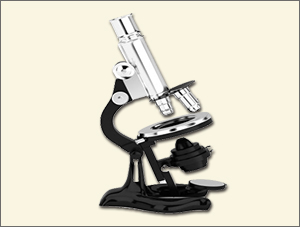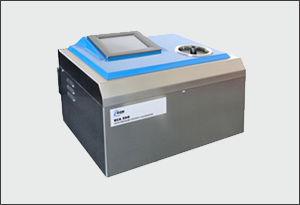In daily mixing processes, the uniformity of material mixing directly determines the quality of the product. As is well known, there is no absolute ideal phenomenon of anything, so absolute uniformity of powder mixing does not exist. The degree to which materials are evenly mixed is relative, and the basic criterion for uniformity is to meet product requirements. So how to improve mixing uniformity, how to judge and test mixing uniformity, is receiving more and more attention from enterprises。
1、 Definition of Ideal Uniformity of Powder Mixing
It is required that each powder participating in the mixing has an equidistant distribution between its particles, and all powders participating in the mixing are evenly distributed from top to bottom, left to right, which is the ideal degree of mixing uniformity. However, the actual situation is that the particle size of the powder cannot be consistent, and the distance between them cannot be consistent. Therefore, this ideal uniform distribution does not exist. In practical work, the uniformity standard of the powder is the relative uniformity standard that meets the product requirements. Meeting the process requirements is' uniform '. The requirement standard for achieving uniform product distribution is uniformity.
2、 The significance of uniform powder mixing in practical work
To understand the meaning of uniformity from two aspects: firstly, to check whether the various parts of the powder (including various powder contents) are uniform at a macro level; The second is to study the microscopic examination of whether various powder particles are evenly dispersed between them.
1. Macro uniformity: This is the first level of uniformity. From a macro perspective, it is required to sample and analyze the upper and lower parts of the container, as well as the left and right parts. The results must be consistent with the proportions of various powder formulations, and there must be no dead corners of the material inside the container, which is a macro level of uniformity. For example, the mixing principle of 3D mixers and V-type mixers is gravity diffusion type, which is easy to achieve macroscopic uniformity, that is, the upper and lower parts of the equipment container are uniform and consistent.

The macroscopic uniform inspection method is: ①. It takes samples uniformly from the top, middle, bottom, left, and right of the barrel (the sampling method is shown in the above figure);
② The quantity of samples taken is relatively large, ranging from 50g to 100g;
③ The difference in powder content in each sample meets the inspection standards;
④ The direct difference between two samples meets the inspection criteria.
2. Microscopic uniformity: This is the second level of uniformity (requiring higher precision uniformity). From a microscopic perspective, small samples (the size of the sample batch determines the requirements for inspection accuracy) are taken and observed. The various powders between the particles are uniformly dispersed and distributed, and comply with the powder formula ratio, which is microscopic uniformity. For example, although three-dimensional mixers and V-type mixers can achieve macroscopic uniformity, due to the lack of shear means between microscopic particles, it is difficult to achieve microscopic uniform dispersion.
Only one level of uniformity is not truly uniform, and only when two levels of uniformity are achieved simultaneously can practical standards be achieved. For example, the macroscopic inspection of various parts shows that the powder is basically uniform, while the microscopic inspection of small samples shows that the particles are clustered and not fully dispersed, thus not meeting the uniformity standard.

The microscopic uniform inspection method is as follows: ①. Increasing the number and location of samples (the sampling method is shown in the above figure);
② Reduce the amount of sampling to as little as 1 gram or a few grams;
③ The content of each powder in the sample meets the inspection standards;
④ The various powder particles inside the small sample appear uniformly dispersed under the microscope, without any aggregation of the same type of powder.
3、 Uniformity testing method for sampling mixed results
Due to the ever-changing forms and properties of powders, there are metal powders, chemical powders, food, pharmaceutical powders, batteries, ceramic powders, etc. Some powders can be tested and inspected; Some powders can be observed under a microscope; Some powders can be sensory tested. So the inspection of powder mixing results is a very complex problem that needs to be treated in a specific case. Below are some common inspection methods.
1. Laboratory testing method

Chemical analysis is often used to check the content of powder in mixed results, but this method has certain limitations.
The advantage is that the test results are accurate and reliable;
The disadvantage is that the cost of testing is high, the steps are complex, and not every powder can be tested.
2. Microscopic observation method (microscopic particle uniformity detection)

Microscope is also a commonly used method for testing mixing uniformity.
The advantage is that it is intuitive and able to check the uniform dispersion of powder particles under microscopic conditions;
The disadvantage is that it is difficult to quantify conclusions. Containing dyeing powder or similar colored powder is difficult to observe clearly.
3. Sensory testing method
This is a challenging testing method that relies on experienced individuals to observe and analyze the texture of particles, and determine whether the mixing uniformity meets the standard. This lacks scientific validity and cannot quantify conclusions, but it is still a commonly used method of use.
4. Using standardized methyl violet testing method

Methyl violet spectrophotometer
The methyl violet test method is to add a third-party methyl violet powder specifically used for comparative testing to the mixed material. In the test results, only the easily detectable methyl violet powder needs to be tested to compare and prove whether the mixing results are uniform.
The advantages are: fast inspection and clear quantification of results;
The disadvantage is that if there are powders with extreme characteristics in the mixed powder, such as ultra-light powder, ultrafine powder, or overweight powder, the resulting mixing results may be uneven and inconsistent with the results of methyl violet testing.
5. Downstream finished product inspection method
Using the quality of downstream products to test mixing uniformity is also the most commonly used method and the last one.
The advantages are: convenient, direct, and accurate;
The disadvantage is that there is no qualitative and quantitative analysis method, and the problem of uneven mixing results has already caused significant losses.
4、 How to improve the uniformity of powder mixing
To achieve uniform mixing of powders at both macro and micro levels, it is necessary to operate the container so that the powders undergo repeated movements such as flow, diffusion, opposition, and folding, allowing for mutual mixing and infiltration between powders, thus achieving the goal of uniform mixing of powders at the macro level; The requirement is to use the moving blades inside the container to force the powder to repeatedly stir, shear, and other movements, continuously breaking up the adjacent relationships between the powder particles at the micro level, allowing the powder particles to fully move and exchange, and achieving the fine mixing of materials at the micro level of the powder. To achieve complete and perfect mixing at both macro and micro levels, it is necessary to organically combine these two types of mixing movements and work together to improve the uniformity of powder mixing.